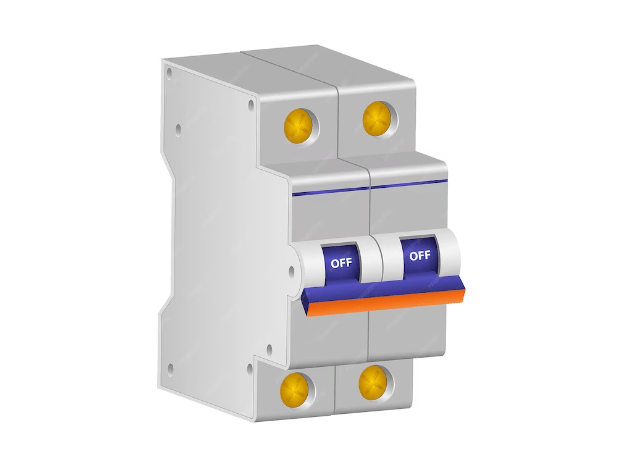
Table of Contents
ToggleIntroduction
A circuit breaker is an automatically operated electrical switch designed to protect an electrical circuit from damage caused by overcurrent or overload or short circuit.
Its basic function is to interrupt current flow after protective relays detect a fault. Unlike a fuse, which operates once and then must be replaced, a circuit breaker can be reset (either manually or automatically) to resume normal operation.
Circuit breakers are made in varying sizes, from small devices that protect an individual household appliance circuit breaker up to large switchgear designed to protect high voltage circuits feeding an entire city.
The standard ratings of different class of circuit breakers are given in various national and internal standards. According to IEC specification, AC circuit breaker has following ratings.
Rated Voltage of Circuit Breaker
During normal operating condition the voltage at any point of power system is not constant, hence manufacturer guarantees the circuit breaker at rated maximum voltage, which as a rule is higher than rated nominal voltages.
Rated maximum voltage of a circuit breaker is the highest rms voltage, above nominal system voltage for which circuit breaker is designed.
Below 400 KV system, the circuit breaker is designed to withstand 10% above the normal system voltage and above or equal 400 KV system circuit breaker is designed to withstand 5% above the normal system voltage.
Rated Current of Circuit Breaker
Rated current of a circuit breaker is the rms value of the current which circuit breaker contacts are able to carry at rated frequency and at the rated voltage continuously, without exceeding temperature limits.
Circuit breakers are installed in enclosures, hence the temperature rise limits are considered w.r.t ambient temperature inside the enclosure that should not exceed 40 °C copper to copper contact and 55 °C for silver or other contacts.
Rated Frequency of Circuit Breaker
Rated frequency of a circuit breaker is the frequency at which it is designed to operate. Standard frequency is 50 Hz.
Rated breaking current and MVA capacity of Circuit Breaker
Rated breaking current is the highest short circuit current that the breaker contacts are capable of breaking under specified conditions of transient recovery voltage and power frequency voltage.
When a short circuit current flows through the circuit breaker, there are thermal and mechanical stresses in the current carrying parts of the breaker.
If the contact area and cross section of the conducting parts of the circuit breaker is not sufficiently large, they may damage the insulation as well as conducting parts.
Hence, short circuit breaking current of circuit breaker is the maximum current that flows through the breaker from time of occurring short circuit to the time of clearing the short circuit without any permanent damage.
When short circuit occurs it is seen that the rms value of the fault current is maximum and decreases with time on account of presence of DC component of the current which decays with time.
At the time of occurrence of fault relay senses the fault and gives trip command to circuit breaker, this process takes few cycles of operation. Hence the actual fault current interrupted by the circuit breaker is less than the initial value of the fault current.
Rated breaking current has two components,
Symmetrical breaking current: It is the rms value of AC component of the current in the pole at the instant of contact separation.
Asymmetrical breaking current: It is the rms value of total current comprising AC and DC components of current in the pole at the instant of contact separation.
Conventionally the breaking capacity is considered in terms of power rating.
Breaking capacity in MVA=√3*Rated Voltage in kV*Rated Breaking Current in kA
Rated making current of Circuit Breaker
Rated making current is the rms value of total current including AC and DC components when circuit breaker contacts are closed on short circuit i.e. capacity of breaker to close its contacts against short circuit. It is considered at the time of first peak of short circuit current.
At the instant of circuit closed by circuit breaker, first cycle of the current has maximum amplitude and it is about twice of the amplitude of symmetrical fault current. The circuit breaker contacts have to withstand this highest value of current during the first cycle when breaker is closed under fault.
Rate making current is usually greater than the rated breaking current of a circuit breaker i.e. breaking an electric circuit is difficult due to arcing which occurs and which has to be quenched.
Making Capacity in kA= 2.55 * Symetrical Breaking Current in kA
Rated short time current of Circuit Breaker
Rated short time current of circuit breaker is the rms value of current that circuit breaker contacts can carry in fully closed position without damage for specific time interval under prescribed condition. Normally, it is expressed in terms of kA for period of 1sec or 4 sec.
Rated operating duty of Circuit Breaker
Rated operating duty of circuit breaker is the prescribed number of unit operation at stated intervals. As per the IEC recommendations for the circuit breakers that are not intended for auto[1]enclosure, rated operating duty has two alternatives.
O-t-CO-t’-CO
O-t”-CO
O-Opening Operation, C-Closing Operation, CO-Closing followed by Operation, t,t’-Time Interval in Minutes, t”=Time interval in Seconds
Circuit breakers that are intended for auto-enclosure, rated operating duty as follows
o-0-CO
O-Dead Time (Cycles)


Pingback: HVDC Circuit breaker: Working, Types and Application
Pingback: Types of Circuit Breaker and their working principle
Pingback: Types of Circuit Breaker testing and SF6 breaker testing
Pingback: Circuit Breaker working principle and Methods of arc extinction
Pingback: SF6 circuit breaker: Construction and working Operation